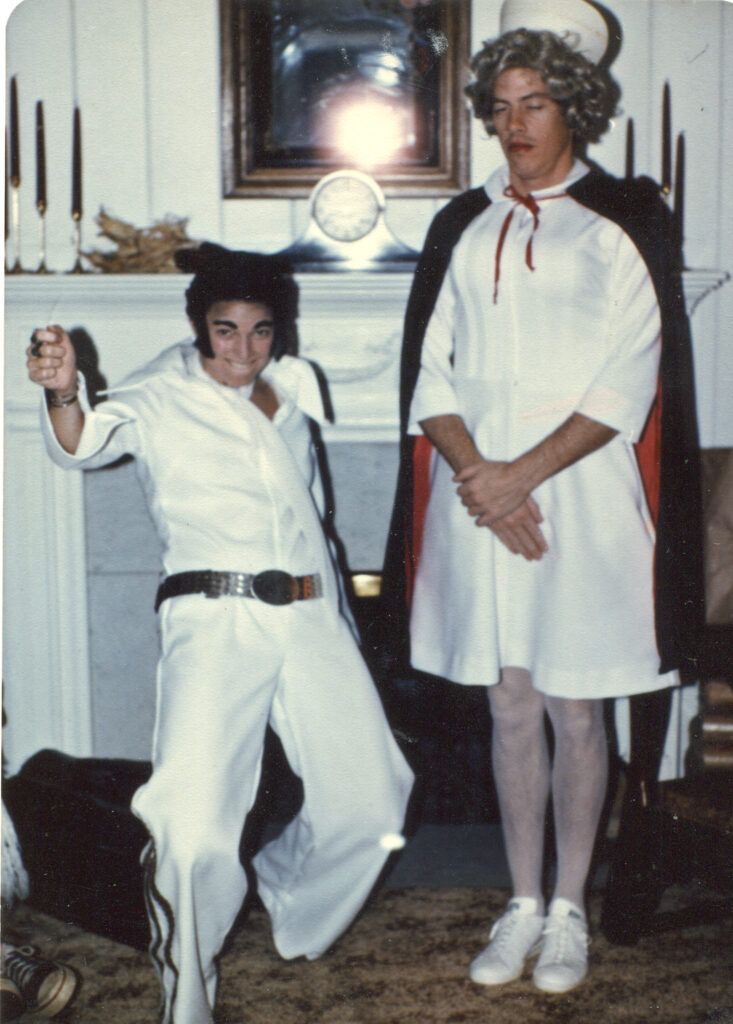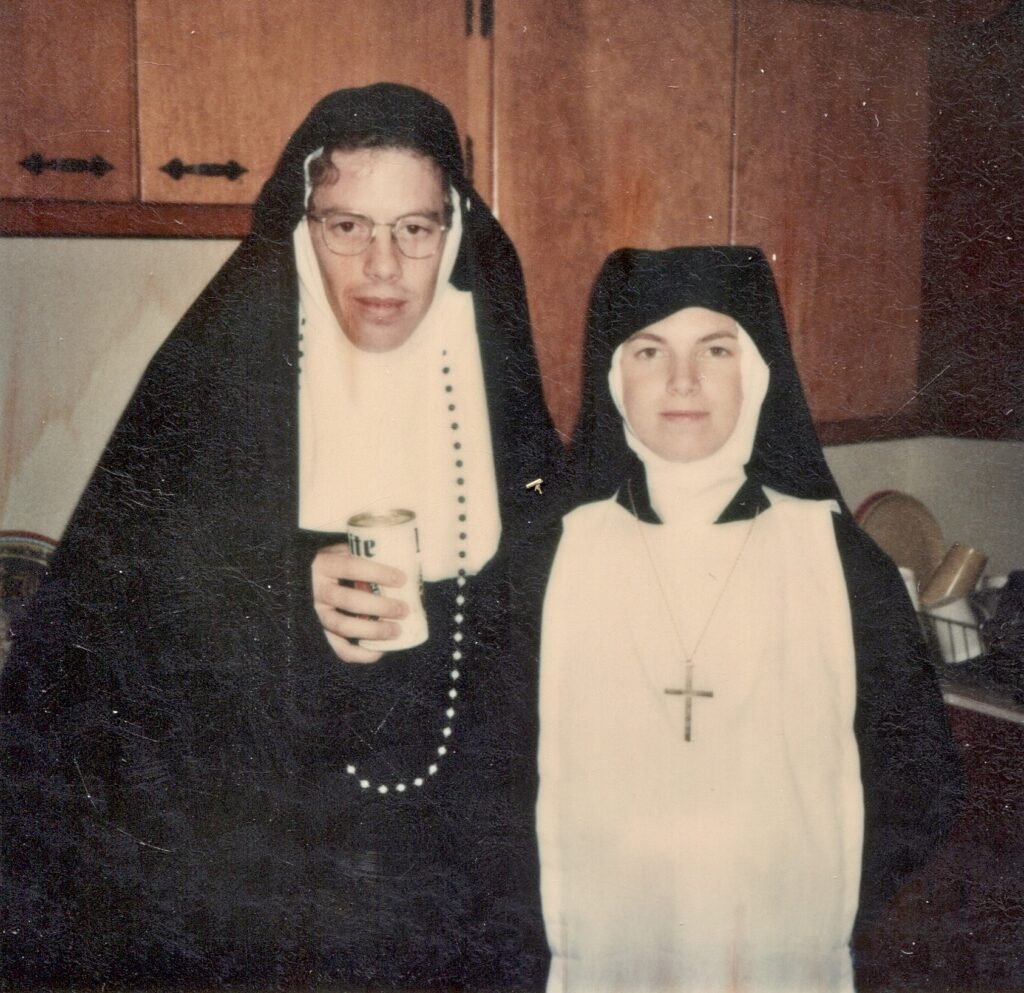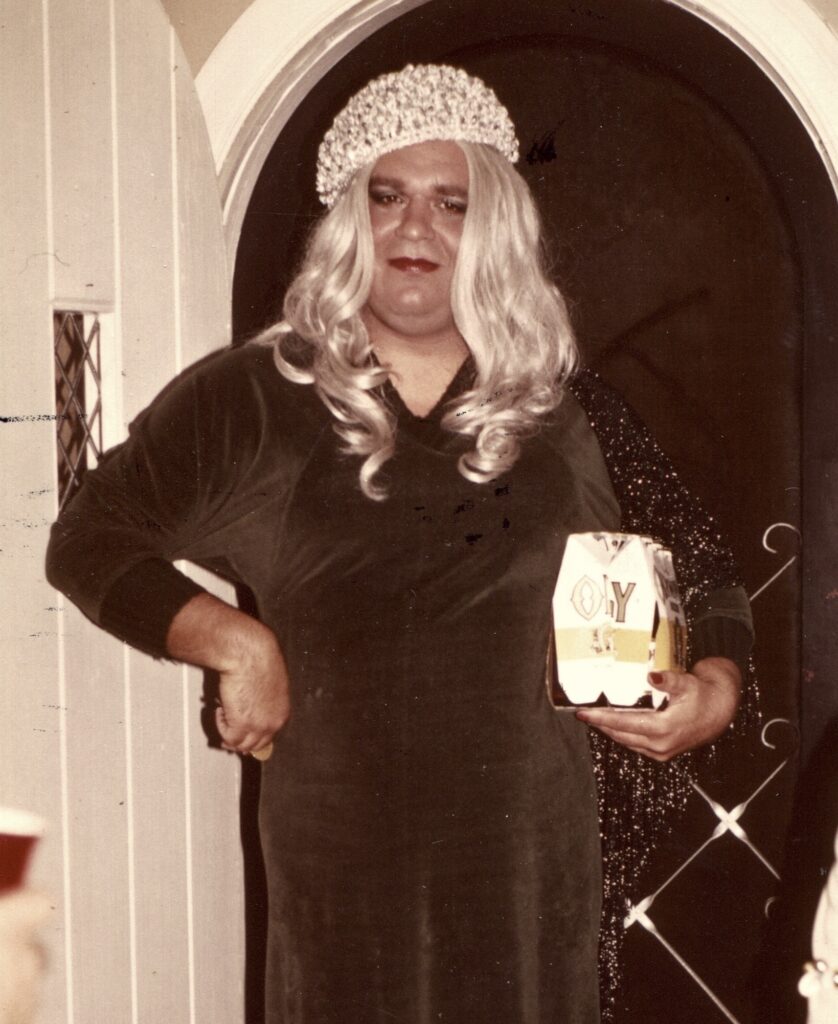There must be plenty of them but nothing comes to mind. The question popped into my head after seeing photos of J. D. Vance in a blond wig and floral print skirt. A halloween photo from his college days. And former U. S. Congressman George Santos wasn’t camera-shy during his drag queen days.
Our annual Halloween parties were the social event of the year and I showed up dressed as a woman at least two of those parties. Once as a nurse, the other time as a nun.


The nun photo is memorable because Barb and both came as nuns (from different orders it would appear). Neither of us aware of the other’s costume.
Once I saw just how good a man could look in a dress and wig, I gave up on that costume idea.

While searching for my most embarrassing photo, it occurred to me that it wouldn’t be in my collection. It would almost certainly be a photo someone else took and that I didn’t know existed. If you have such a photo, I’d very much like to see it. (My embarrassment bar is pretty hight these days.)
In my youth, people didn’t walk around with a camera in their hand (or pocket). And if it was nighttime you’d need a flash. And then the wait for the film to be developed and on and on. It was just too much trouble. So there just weren’t as many photos. And if you had a good one, sharing it meant a trip to the post office. And what is an “embarrassing photo” in an age when teenagers text each other pictures that can only be described a pornographic?
The photos of Vance are only a problem (if it is a problem) because of his homophobic anti-trans comments on the campaign trail. And I’m not sure George Santos minded at all.
I’ll keep looking for my most embarrassing photo and update this post if I come up with something.





